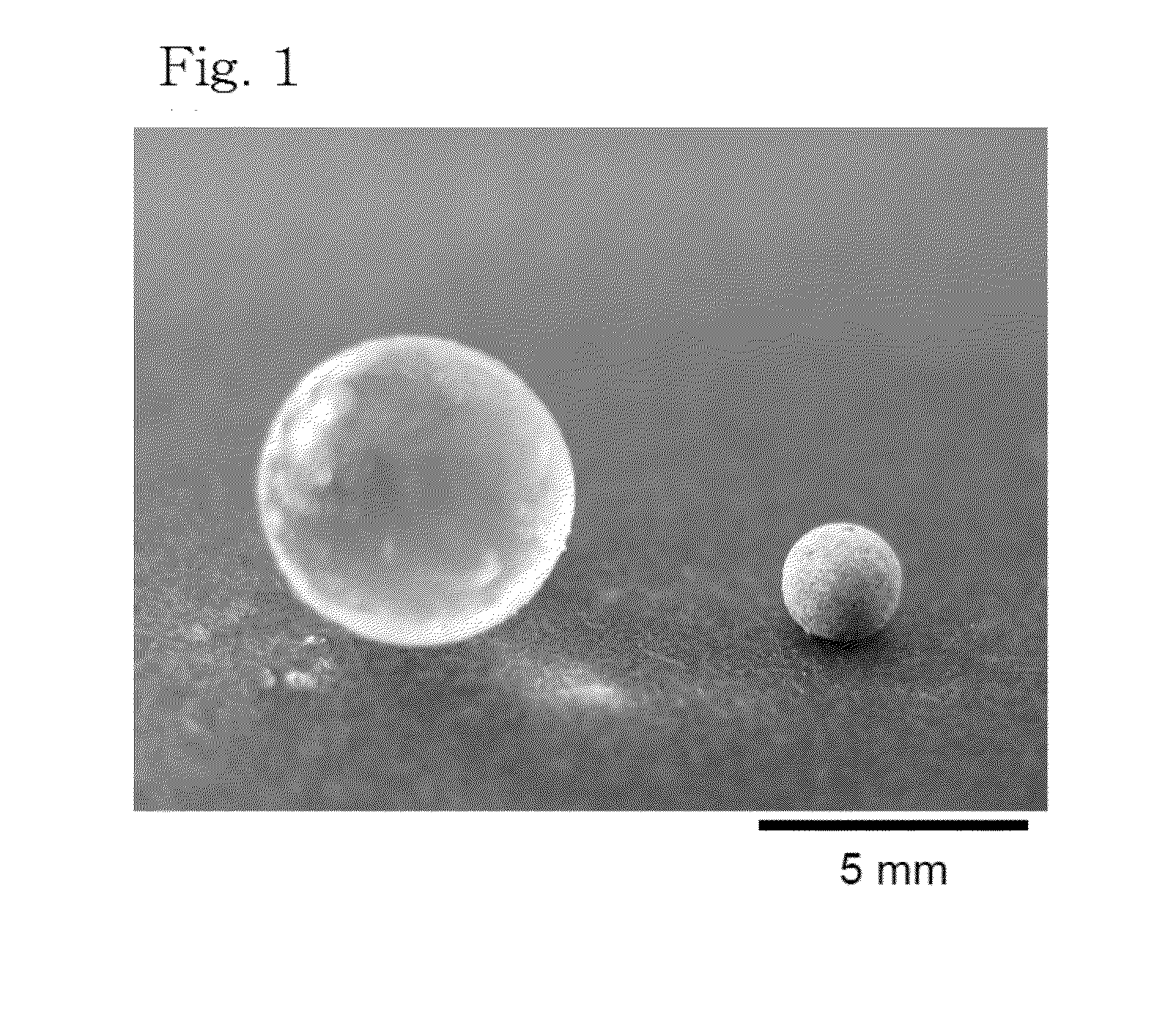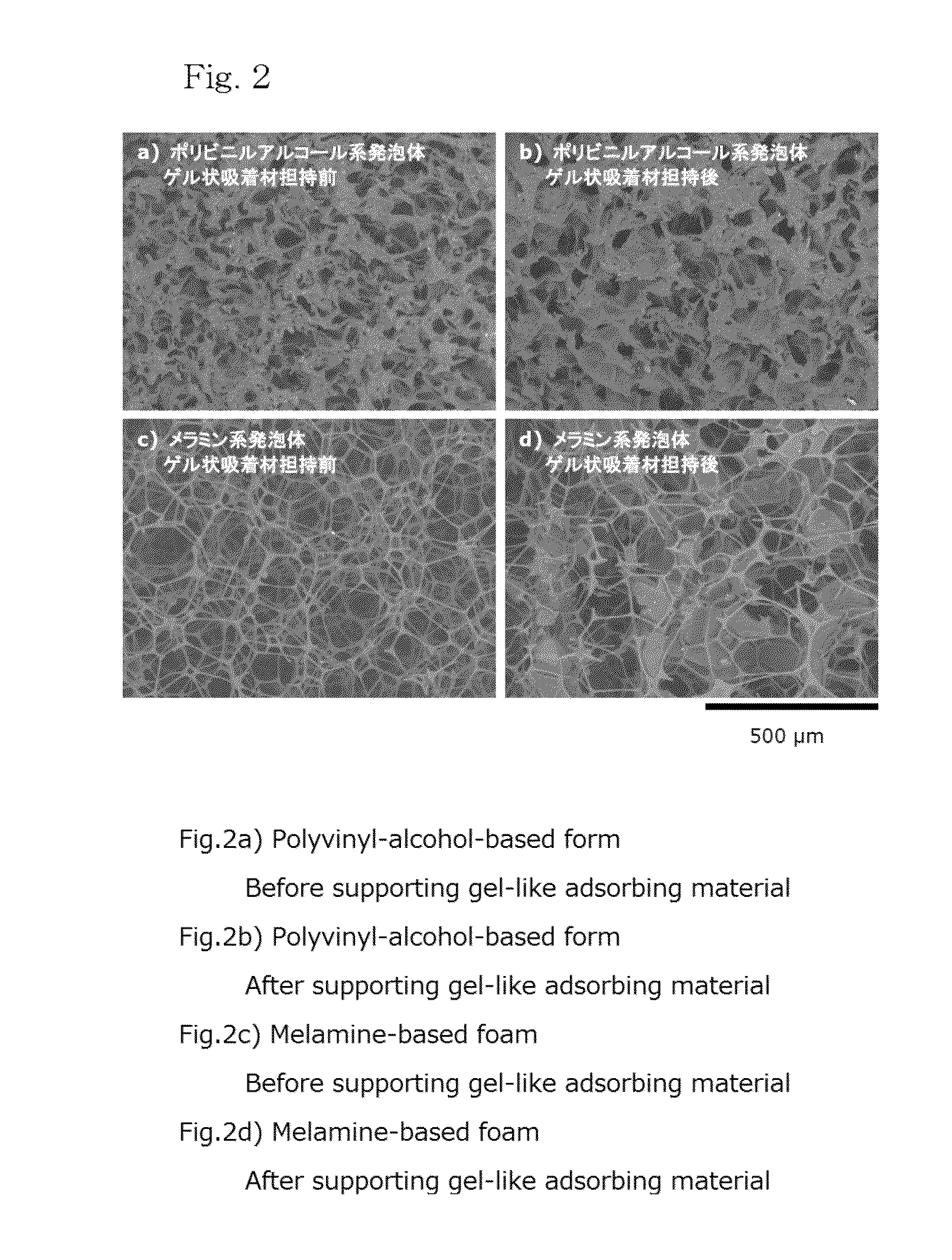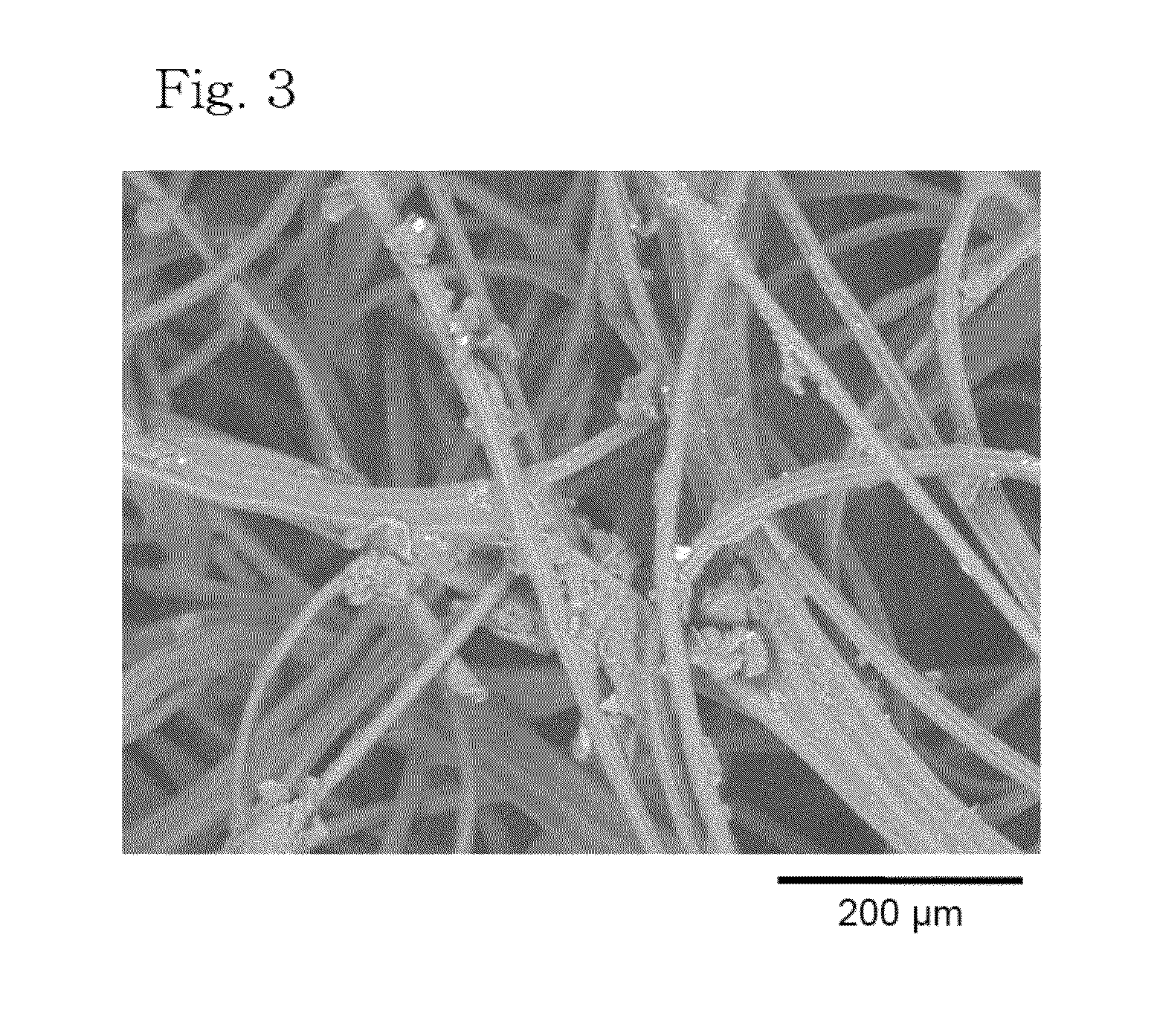Metal-adsorbing gel and adsorbent supporting metal-adsorbing gel
a technology which is applied in the field of metal adsorption gel and adsorbent supporting metal adsorption gel, can solve the problems of difficult removal of heavy metals with ion-exchange resins, high cost of metal recovery and also the number of processes, and achieves high metal adsorption capacity, shrinkage in volume, and reduction of the cost of metal recovery
- Summary
- Abstract
- Description
- Claims
- Application Information
AI Technical Summary
Benefits of technology
Problems solved by technology
Method used
Image
Examples
example 1
[0051]Production of Gel-Like Metal-Adsorbing Material of Carboxymethylated Polyallylamine Type
[0052]Ethylene glycol diglycidyl ether was added to 100 mL of an aqueous polyallylamine solution having an average molecular weight of 1,600 (15 wt %) and allowed to react at 50° C. for 1 hour, thereby giving a gel-like polymer mass. At this time, the amount of ethylene glycol diglycidyl ether added was changed from 0.4 to 2.0 mL to prepare gel-like polymer masses having crosslinking degrees of 1.0 to 5.0 wt %. The obtained gel-like polymer masses were each crushed, added to a solution prepared by dissolving 96 g of sodium monochloroacetate in a 1.0 M aqueous sodium hydroxide solution, and allowed to react at 60° C. for 4 hours, thereby performing N-carboxymethylation. The reaction product was removed by filtration and washed with water and then with methanol. The four kinds of gel-like metal-adsorbing materials obtained having different degrees of crosslinking were immersed in a 100 mg / L c...
example 2
Production of Gel-Like Metal-Adsorbing Material of Partially Carboxymethylated Polyethyleneimine Type
[0053]125 g of polyethyleneimine having an average molecular weight of 10,000 (manufactured by Wako Pure Chemical Industries) was added to a 1 M aqueous sodium hydroxide solution having dissolved therein sodium chloroacetate (340 g) and then carboxymethylated at 60° C. for 6 hours with stirring. 4.0 mL of ethylene glycol diglycidyl ether (equivalent to a crosslinking degree of 7.5%) was mixed with 100 mL of the obtained partially carboxymethylated polyethyleneimine and allowed to react at 50° C. for 1 hours. In the same manner as in Example 1, the obtained gel-like metal-adsorbing material was crushed and immersed in a 100 mg / L copper sulfate solution adjusted to pH 5.5 to adsorb copper. From the amount of copper loss from the copper solution, the amount of copper adsorption of each gel-like metal-adsorbing material was determined. The result was 1.54 mmol / g, indicating clear copper ...
example 3
Production of Spherical Gel-Like Metal-Adsorbing Material
[0054]0.4 mL of ethylene glycol diglycidyl ether (equivalent to a crosslinking degree of 5.0%) was mixed with 20 mL of an aqueous polyallylamine solution having an average molecular weight of 1,600 (15 wt %). The mixture was added dropwise to chlorobenzene maintained at 60° C. using a syringe and allowed to react with stirring for 20 minutes, thereby giving a spherical gel-like metal-adsorbing material having a particle diameter of about 6 mm. The obtained spherical gel-like metal-adsorbing material was immersed in a 50 mg / L copper sulfate solution adjusted to pH 5.5 to adsorb copper. From the amount of copper loss from the copper solution, the amount of copper adsorption of the spherical gel-like metal-adsorbing material was determined. The result was 0.21 mmol / g. Photographs of the spherical gel-like metal-adsorbing material before and after copper adsorption are shown in FIG. 1. Water retained upon copper adsorption was dis...
PUM
| Property | Measurement | Unit |
|---|---|---|
| pressure | aaaaa | aaaaa |
| pressure | aaaaa | aaaaa |
| pH | aaaaa | aaaaa |
Abstract
Description
Claims
Application Information
 Login to View More
Login to View More - R&D
- Intellectual Property
- Life Sciences
- Materials
- Tech Scout
- Unparalleled Data Quality
- Higher Quality Content
- 60% Fewer Hallucinations
Browse by: Latest US Patents, China's latest patents, Technical Efficacy Thesaurus, Application Domain, Technology Topic, Popular Technical Reports.
© 2025 PatSnap. All rights reserved.Legal|Privacy policy|Modern Slavery Act Transparency Statement|Sitemap|About US| Contact US: help@patsnap.com



